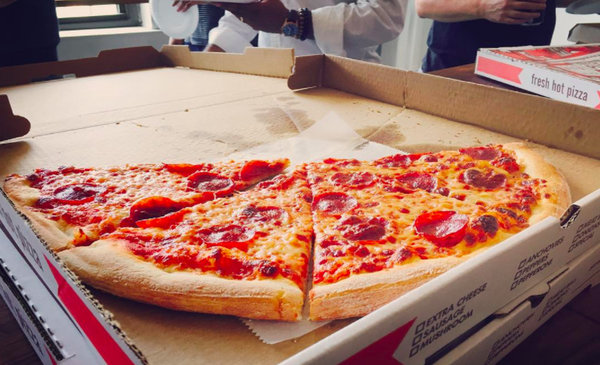Surrounded with world-renowned brands such as Amazon, Apple, Procter & Gamble and Netflix, we tend to forget there are over 28 million small businesses in America that create two-thirds of all new jobs. Publications, podcasts, business schools (and myself!) love to analyze what makes these giants successful. Although these case studies are inspirational, it is very hard if not impossible to implement such strategies with little to no marketing budget.
I truly believe that ‘small’ brands and businesses are poised for growth in today’s crowded marketing environment. Below is some (free) advice on how to build a brand when you can’t afford the Super Bowl half-time, nor even a local TV spot. I intend to turn the tables here, by giving small brands some tips that large players could hardly, if ever implement.
1. Offer A Product That Is Noticeably Different And Superior
A local brewery can’t compete with Budweiser’s marketing budget. But its product is locally-made, has a distinctive taste and comes across as authentic. Such craft beer should be marketed to connoisseurs that seek your craftsmanship as well as regular beer drinkers that will indulge with your product from time to time. Remember that you are not trying to dominate the lager segment: these same people likely drink Budweiser also and that’s ok. Your play is to secure a niche of loyal buyers and leverage the uniqueness and quality of your product to command a price premium.
This same strategy can be implemented for any artisan-made products, such as small-batch whisky, scented candles, olive oil, barbeque sauce or marmalade. If your production is very small (for now), take the time to write labels, and thank you cards by hand. Yes, it takes ages and doesn’t scale up, but it costs pennies and handwriting is the hallmark of authenticity.
The smaller the budget, the more you will have to rely on your point of difference. If you don’t have one, here are 50 ideas. Brands with small budgets should focus their resources on promoting their strengths, ideally the key point of difference. Often, being local can be your strongest link versus large competitors. In cases like these communicate your local origins, reflect the local culture and reposition the ‘strangers’ as your far away, disconnected rivals.
2. Engage In Customer Intimacy
Jack Trout once pointed out, being ‘mentally closer’ to what’s important to customers sparks an intimacy that is a core advantage for smaller brands. For example, cross-fit studios, spin-cycling studios and other small gyms charge 2-5 times more than large fitness chains. Yet they often offer a lot less amenities, in much smaller venues. Their success is found in customer intimacy. That is, to understand the goals of each and every member, develop custom fitness programs accordingly and track member’s progress. I worked for a large health club chain early in my career. Keeping track of each member in a club that hosts 2,500, let alone remembering their name is next to impossible. For $40/month at a large chain, you buy access to a well-lit parking lot, plethora of equipment and large changing rooms decked out with saunas and hot tubs. For $150/month at a local gym studio, you pay for personalized training and membership in a community.
Of course customer intimacy is not limited to the fitness industry. Consider these examples: The Papercake Gal (a.k.a Larissa) designs custom wedding stationary with monograms that extend to party favors, postage stamps and even lighting at the reception. Also, Klein Epstein & Parker designs made-to-measure clothes at similar or lower prices than designer suits.
3. Provide Useful And Meaningful Content
Meaningful content is one of the great business equalizers of our times, lifting profiles to that of much larger competitors. While this is widely known, today many small brands have yet to take advantage of the opportunity. Creating content (like this article) is hard work, but it’s cost effective and pays off. People seek and value free, ‘how to’ content to help them deliver on their projects. To be impactful, your content must be informative and express innovative and actionable ideas that matter to your target customer while relating to the essence of your brand. The key to success is persistence: whether you maintain a blog, Instagram feed, LinkedIn profile or Youtube channel, it will take weeks, possibly months before you gain any real traction. Therefore, try to produce content that will be valuable to your audience in the long run. ‘5 tips to lose weight in the New Year’ might be newsworthy today, but becomes pretty irrelevant after January.
If you don’t want to educate your audience, you can simply showcase your craft: Mark’s Bake Shoppe in Staten Island produces outstanding videos and pictures that feature Mark’s artisan-made cakes and pastries. It’s no wonder his Instagram account boasts 1,300+ followers. And if you think 1,300 is small, check the following of your local grocery store (assuming it has any).
Be sure to develop your content with customer intimacy in mind, this is key versus the larger players.
To sum up, most of these strategies require hard work and don’t scale well, but they’ll lay the foundation for a stronger brand on a small budget.
The Blake Project Can Help You Grow: The Brand Growth Strategy Workshop
Branding Strategy Insider is a service of The Blake Project: A strategic brand consultancy specializing in Brand Research, Brand Strategy, Brand Growth and Brand Education




